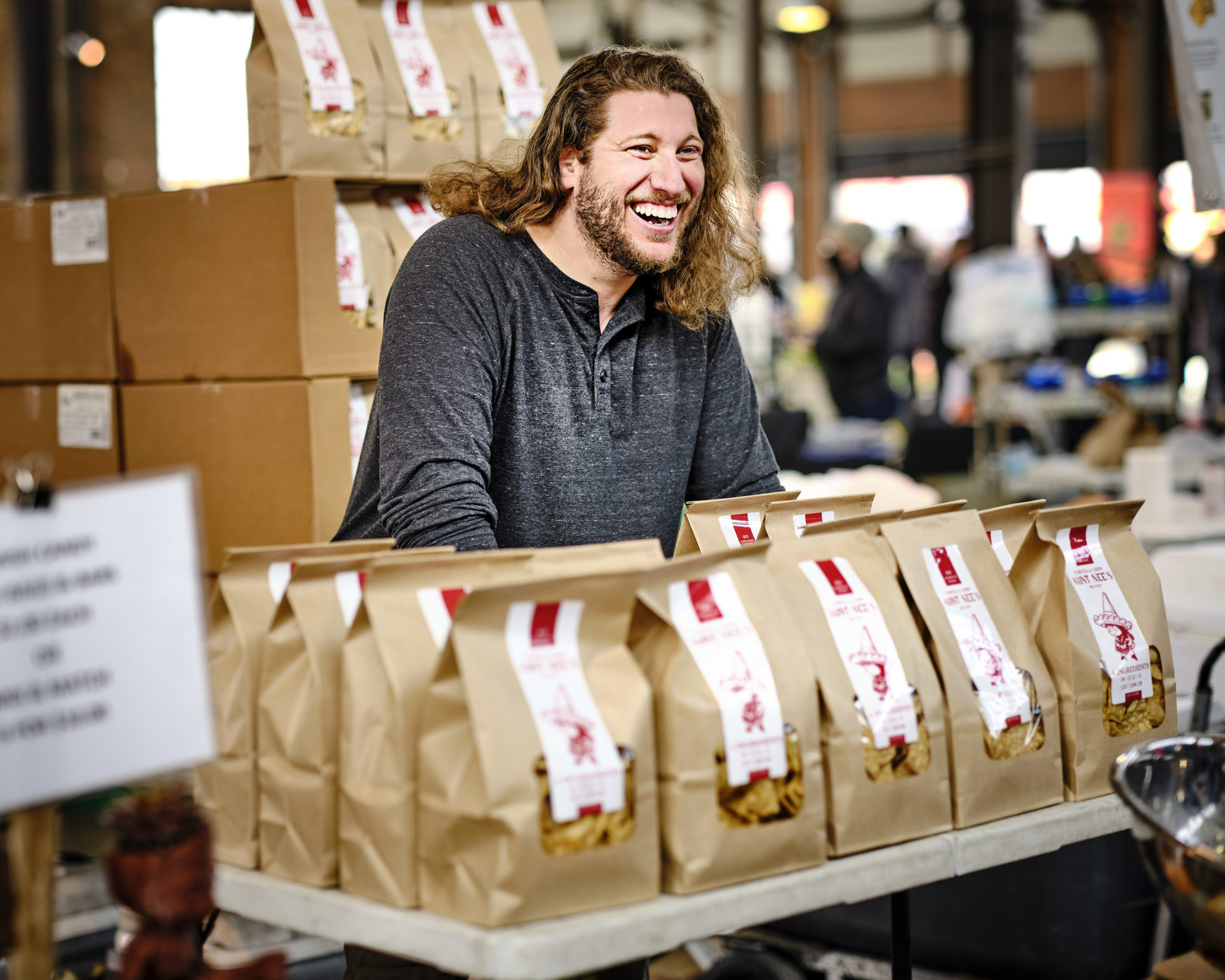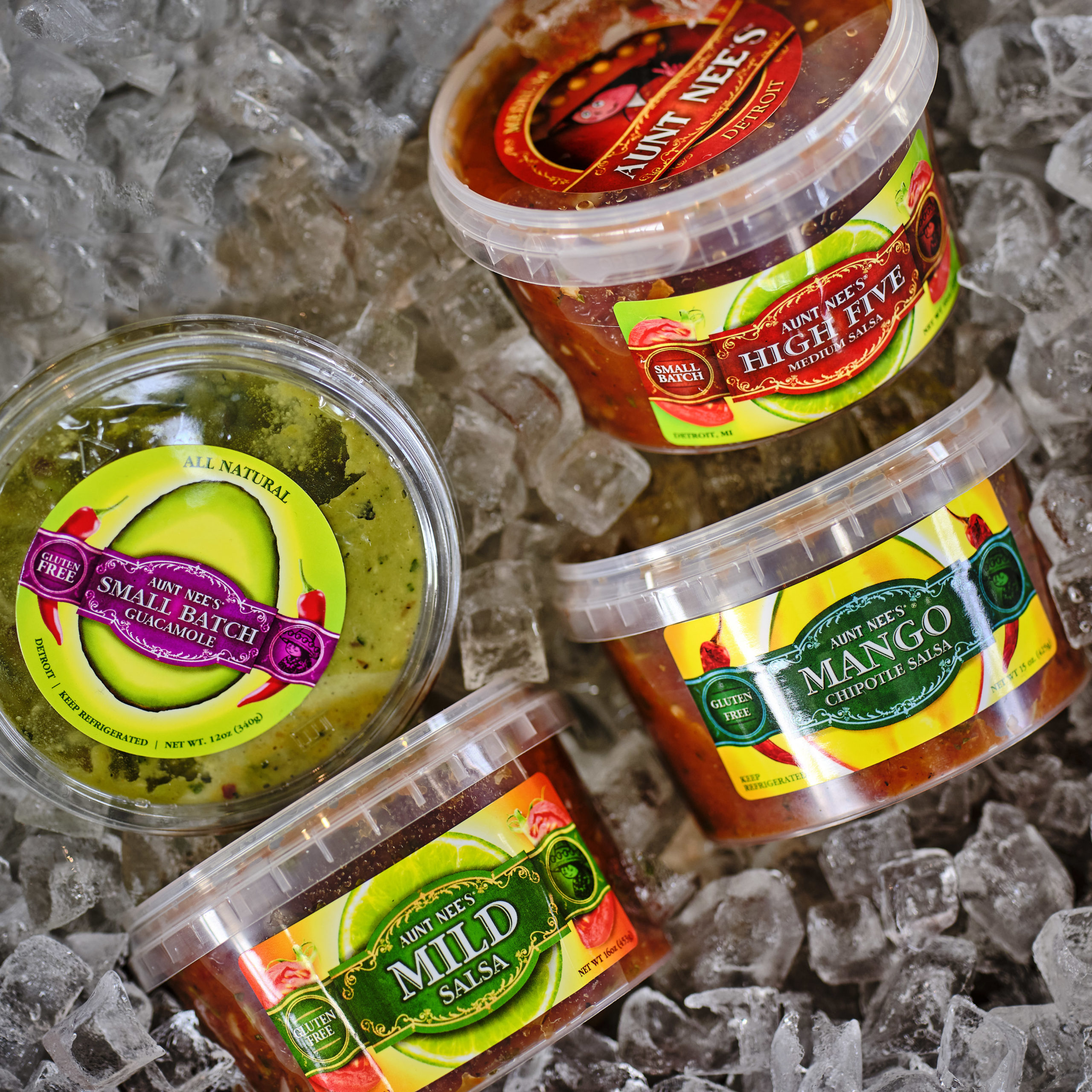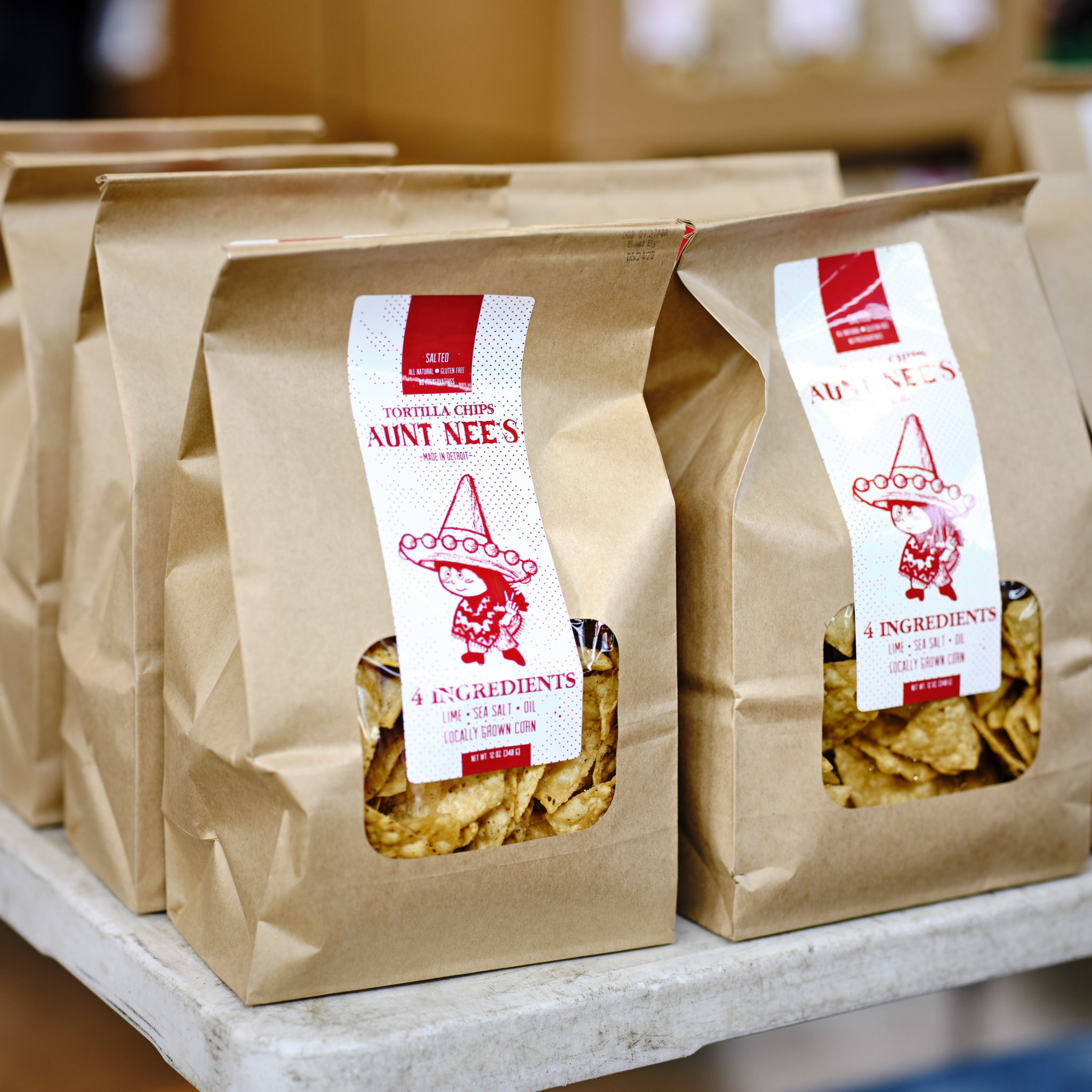Detroit tacos and Mexico City roots: A Q&A with Carlos Parisi of Aunt Nee’s

Carlos Parisi spends a lot of time thinking about food. The 33-year-old Detroiter hosts the Sandwich Talk podcast as well as Deadline Detroit’s “Detroit Digest” web video series spotlighting food gems in and around the city.
But Parisi’s main gig is as proprietor of Aunt Nee’s, a local brand of stellar, four-ingredient tortilla chips, guacamole, and salsas. Buoyed by Parisi’s ebullient charisma, Aunt Nee’s has become a weekend staple at Detroit’s Eastern Market and can now be found at specialty grocers around metro Detroit as well as Michigan’s upper reaches in Sault Ste. Marie, with sights set on growth outside of Michigan in the future.
Over the years, Parisi has also been an active member and supporter of Detroit’s pop-up restaurant scene with brands like Khana Detroit and High Five Taco.
We caught up with Parisi to talk tacos just as he was preparing to take some friends on a whirlwind food tour of Mexico City.
This conversation has been lightly edited for brevity and clarity.
Frame Stories: What’s your connection to Mexico City?
Carlos Parisi: I was born in Mexico City. My entire mom’s family still lives in Mexico City. I was there for just a few months of my life as a baby and then my mom and dad brought me back to the south and east side of Dearborn. But every single year, my mom made it a point to spend at least a month in Mexico City to make sure I had as much culture and that I didn’t lose anything. She also had a lot of friends here in the U.S. from Mexico City. We had this beautiful, very Mexican community growing up. I’m proud to say I didn’t lose any of the Spanish or that culture because it was so deeply ingrained in everything I was.
It’s part of the Mexican culture to take your food and the things and traditions you do and mix it in with everything that’s going on around you. Which I think is something that was not as welcomed here in the United States, at least from my family here on my dad’s side when they came. They moved here from Lebanon and Sicily. The Lebanese family moved here in the early 1900s for Ford jobs. And when they got here, that was the end of them being Lebanese. They were American from then on. And, yeah, grandma would make Arabic food, but there was a definitive line — you were American.
FS: How do you navigate those dual identities?
CP: I always have to prove myself to be white enough or Mexican enough. Going down to Mexico I get called a gringo. That sucks. I don’t want to hear that. I spent my life doing the traditions and learning and loving my culture and loving where my mom came from and how I was raised and where I was born. And for that to just be taken away from you by someone saying you’re not Mexican enough? That really sucks. I don’t look like the traditional Mexican that everybody understands and knows.
But then here I wasn’t white enough for the kids I went to school with sometimes. I went to Catholic school and a lot of the kids were ruthless. “Why do you talk like that or bring something gross to lunch?” You had to conform and be white and listen to white music and eat pizza regularly — which I’m fine with; I love pizza. But I took it upon myself to really dive deep in a lot of the different cultural things that make us who we are, in terms of being Mexican or American. I agree with both cultures. I think I’m Mexican-American.


FS: Let’s talk tacos. You host a podcast called Sandwich Talk, so I know you’ve probably thought about this: Is a taco a sandwich?
CP: I’ve talked about this a lot on the podcast: I think a taco is a taco. There’s no other way around it. Is a hot dog a sandwich? Is a cheeseburger a sandwich? If somebody were to say, “Hey, I’m gonna go get a bunch of sandwiches,” and they come back with a bunch of hot dogs or tacos, you’d be confused — because they said they were bringing sandwiches. I’m not going to be mad about the tacos. I’ll eat the hell out of them. But I was expecting sandwiches. John Yelinek says if you can name it without its vehicle, then it’s not a sandwich. A hot dog without a bun is still a hot dog. If you take the tortilla away, then you’re just eating meat and cilantro and onions or whatever else is on it.
FS: What’s a perfect taco look like to you?
CP: First and foremost, you cannot have a dry tortilla. It has to be fresh. If you have somebody making fresh tortillas for you — that’s it. Game over. You just beat the majority of other taco places. Fresh ingredients across the board, too. For me, a taco should have cilantro and onion and salsa. But when I want a taco and the comfort of home, it probably has to be al pastor off the spit, fresh tortilla, cilantro, onion, and salsa verde. If we’re really talking home and tradition, a smoky, fired slice of pineapple that’s tossed on it, too. If they can slice off the pineapple and have it land on the taco three feet down on their hand, you know they’ve done good work.
FS: What are your go-to taco spots in Detroit?
CP: I’ve really been into this one place on McGraw just off of Central. It’s a taco truck called El Takito Loco — Crazy Taco. Their meat is always the juiciest. Their tortillas are never dry. That place rocks for tacos, for quesadillas. They know what they’re doing. It’s one of the best tacos I’ve been able to find in Detroit, if not metro Detroit.
You can’t say anything about tacos in Detroit without saying El Parian. I live by an El Parian food truck so that’s probably where I go the most. Everything they’ve been able to put together is beautiful and delicious.
But then also M Cantina is a place you can’t not go to. M Cantina is awesome because they use ingredients that a lot of people don’t know about. It’s a small spot with like 20-something salsas and they’re all unique and delicious. When I took my mom to M Cantina, she was blown away and was like, “It’s like we’re in Mexico at a nice restaurant.” She’s since taken her friends to go there. They’ve all fallen in love with Junior and his family, his story. They feel that connectedness and similarity they have in their lives. It’s part of their story as well. They came here with what they had and were able to make something of it. You have to check out M Cantina.
FS: How do you feel about fusion tacos? You see so many different applications of the “taco” name now that it risks losing its cultural link. Where is that line for you?
CP: If somebody is going to go about fusion, it has to be done with proper respect and education. If somebody just made themselves some tacos that are fusion without knowing where tacos come from or spending time eating proper tacos, having spent time with those ingredients or what that all means or what the styles are, then you’re kind of missing the point. But if somebody dedicates a certain amount of time to the understanding of what those ingredients are and what that specific dish is, then fusion can be done. For people to crucify some chefs just for doing fusion cooking I think is really awful.
In Mexico City specifically, there’s a lot of fusion. Sometimes it’s done poorly. I’ve had some really bad Japanese-Mexican fusion. But it can be done really well, too. There’s these guys that opened a Korean taco place in Mexico City during the pandemic. One of the guys spent a lot of time studying Korean ingredients and decided to mix it with Mexican food. It’s really good.
But I have to say: Mike Ransom — awesome guy. He put jicama tacos on the menu at Ima and I thought to myself, “Jicama shell? I’ve got to try this.” And it turned out to be my favorite thing Ima does. I don’t know why. It’s not a taco, but it acts like a taco. That’s a smart way of taking really good ingredients and giving you a proper vehicle for consuming those ingredients.
FS: What is it about tacos that makes them such a beloved food?
CP: I believe that handheld food is always going to succeed over a lot of other foods that people might be a little scared of. The fact you can pick something up, give it a bite, and either you like it or don’t, makes it super simple to understand. And if you can take that option and turn it into something that you love, it just makes sense. You need one hand to hold the taco and put it in your mouth. And you have a napkin or a plate or beer in the other. If it’s handheld, it’s simple and approachable. It can be done anywhere, presented any way, and can be eaten in any form. Tacos just make sense.




